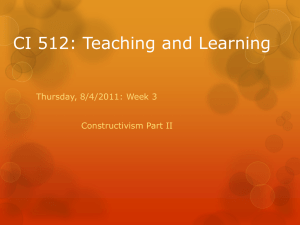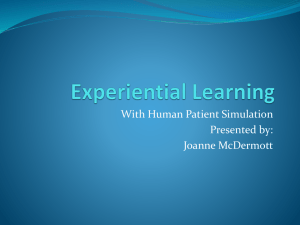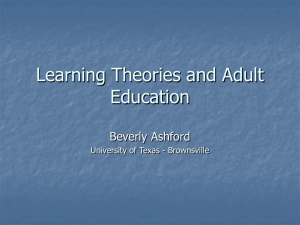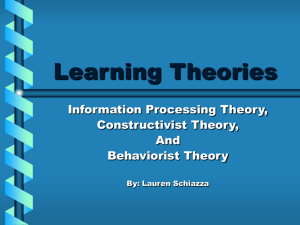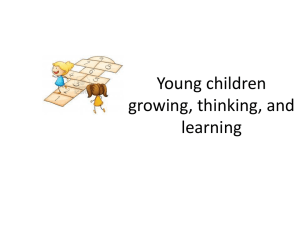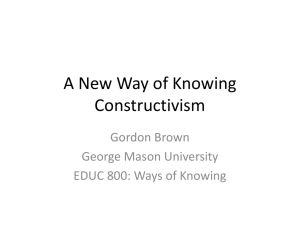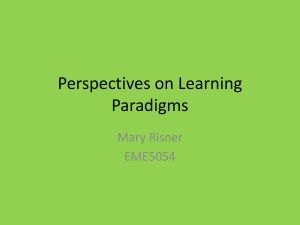Learning Theories Critique
advertisement
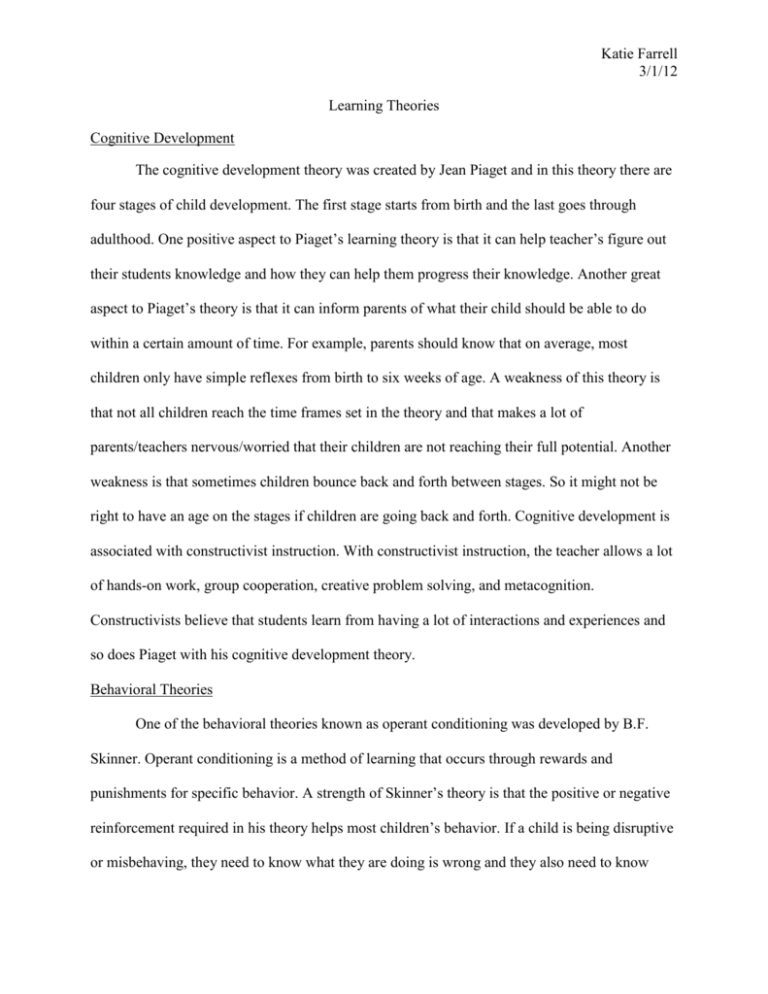
Katie Farrell 3/1/12 Learning Theories Cognitive Development The cognitive development theory was created by Jean Piaget and in this theory there are four stages of child development. The first stage starts from birth and the last goes through adulthood. One positive aspect to Piaget’s learning theory is that it can help teacher’s figure out their students knowledge and how they can help them progress their knowledge. Another great aspect to Piaget’s theory is that it can inform parents of what their child should be able to do within a certain amount of time. For example, parents should know that on average, most children only have simple reflexes from birth to six weeks of age. A weakness of this theory is that not all children reach the time frames set in the theory and that makes a lot of parents/teachers nervous/worried that their children are not reaching their full potential. Another weakness is that sometimes children bounce back and forth between stages. So it might not be right to have an age on the stages if children are going back and forth. Cognitive development is associated with constructivist instruction. With constructivist instruction, the teacher allows a lot of hands-on work, group cooperation, creative problem solving, and metacognition. Constructivists believe that students learn from having a lot of interactions and experiences and so does Piaget with his cognitive development theory. Behavioral Theories One of the behavioral theories known as operant conditioning was developed by B.F. Skinner. Operant conditioning is a method of learning that occurs through rewards and punishments for specific behavior. A strength of Skinner’s theory is that the positive or negative reinforcement required in his theory helps most children’s behavior. If a child is being disruptive or misbehaving, they need to know what they are doing is wrong and they also need to know Katie Farrell 3/1/12 how to change/fix the problem. With this theory, a lot more awareness of how to control behavior has been more readily available for parents and teachers, which is beneficial for home/classroom management. On a more negative note, it has been said that Skinner did not really allow much room for other point of views in his theories. He was close-minded when it came to looking at other theories. Also, if a child is constantly being negatively reinforced, they are not learning anything and are going to keep doing the same behavior. Going along with that, a child can be positively reinforced too much as well. Children should be reinforced a lot, but they should not always be given material items when they are being positively reinforced. Behavioral theories are associated with constructivist instruction. Social Constructivism The social constructivism theory was created by Lev Vygotsky. Social constructivism focuses on individual learning that occurs due to interactions in a group. Vygotsky discovered the Zone of Proximal Development (ZPD) which is the zone between a student’s ability to solve a problem independently and the student’s ability to perform with guidance. One of the positive aspects of social constructivism is that this theory pays close attention to differences between individuals in the same culture as well as individuals from different cultures. Also, this theory allows teachers to fully see what students understand when they are working in their ZPD. On a negative side, ZPD cannot be tested. Also, there is not enough attention focused on developmental issues. This theory does not provide a lot of description for children of different ages/developmental levels. Social constructivism is associated with constructivist instruction. Technology Integration Katie Farrell 3/1/12 There are so many different ways technology can be incorporated into the classroom. For direct instruction, the teacher can have the students do individual research on a topic. After they have done research, the class will come back together and the teacher will teach the students how to create a Prezi presentation or PowerPoint by creating one with everyone together by using the information they researched. The teacher will ask for student volunteers to share information for him/her to put into the presentation. For constructivist instruction, a teacher could incorporate technology by having the class break up into groups and do research on a particular topic. For the research the students can use computers, books, etc. As a group, their job is to make a Prezi/powerpoint displaying all of the information they found after doing research on that topic. The Prezi/powerpoint could then be shared with the rest of the class. Essentially the students are learning how to use the technology on their own during the constructivist instruction. There are many ways teachers can integrate technology into their classrooms and make it interesting for their students.



